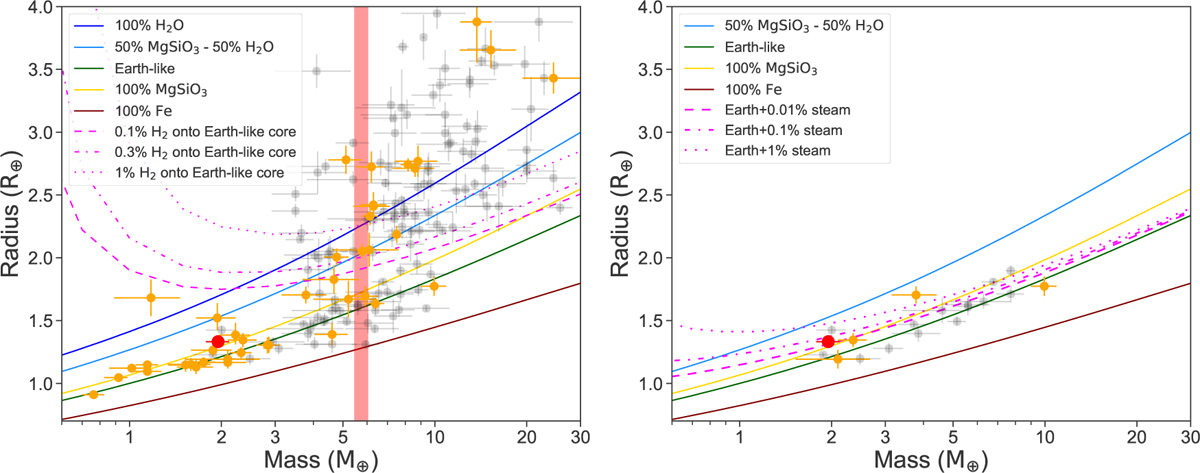Fig. 15

Download original image
Mass-radius diagrams of all known planets (left) and ultra-short-period planets only (right). Only planets with mass determination better than 30% and radius determination better than 10%, according to the TEPCat database (Southworth 2011), are shown. The orange dots represent the known planets orbiting M dwarfs (Teff < 4000 K) and the grey dots represent those orbiting other stellar types. Overplotted are theoretical models for the planet’s internal composition from Zeng et al. (2019; left) and Turbet et al. (2020; right). GJ 806b is shown as a red dot, while the radius band that GJ 806c occupies is shaded in red.
Current usage metrics show cumulative count of Article Views (full-text article views including HTML views, PDF and ePub downloads, according to the available data) and Abstracts Views on Vision4Press platform.
Data correspond to usage on the plateform after 2015. The current usage metrics is available 48-96 hours after online publication and is updated daily on week days.
Initial download of the metrics may take a while.


